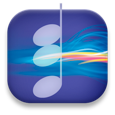Remixular Bells

composer
educator
technology specialist

home


Recreating with Sibelius and your own composition
Using your structural graph and the experience of creating the GarageBand file, you’ll now be able to recreate the composition once more, but this time with music notation using Sibelius. First download the file below:


All of the instructions to complete this task are included on the first page of the file itself. Remember that you can highlight any number of bars and type R to repeat them, which is useful in layered pattern-based music. If you are finding it difficult to get started, a video follows which demonstrates the process. Once you have completed this task, scroll down for instructions on beginning your own composition.
Your own composition
Now it’s time to really get creative. Your final composition task is to create your own composition based on Mike Oldfield’s. Remember that we have learned that:
-
•Oldfield introduced one or at the most two instruments at a time
-
•He layers each entry over the existing ones, usually leaving all other parts going
-
•Some new layers are the exact same material copied into other intstruments
-
•The second piano layer is nearly identical to the first with some notes moved a third to create harmony
-
•Some layers are very simple, such as the “hits”
-
•A mix of busy, complicated patterns and simple, sparse patterns works well
-
•A mix of high and low pitches/instruments works well
-
•Patterns do not all have to be the same length
You should try to use as many of these compositional techniques as possible. Create one pattern (ostinato) and then build on that. You can work in either Sibelius or GarageBand. If working in GarageBand you can play Software Instruments or record yourself playing real instruments, but do not use existing loops.
Extension
Pattern based music soon becomes dull if it does not include moments of contrast or surprise. While this individual section does not create any moments of great contrast, in addition to the subtle changes found above, consider Oldfield’s original material. It consists of 4 bars of 7/8 and one bar of 2/4. Multiple time signatures are not supported in GarageBand so the uneven 5 bar pattern was written out as three bars of 5/4 (technically incorrect).

Because the pulse is continually changing this ostinato does not become dull even though Oldfield repeats it many times and does not create any moments of great contrast. It is subtle but very clever.
As an extension to this composition topic, consider creating your ostinato in more than one metre, or in 5/8, 7/8, 11/8 or 13/8. Subdivide the bar any way you like.
Submit your final score or GarageBand file to your teacher.








